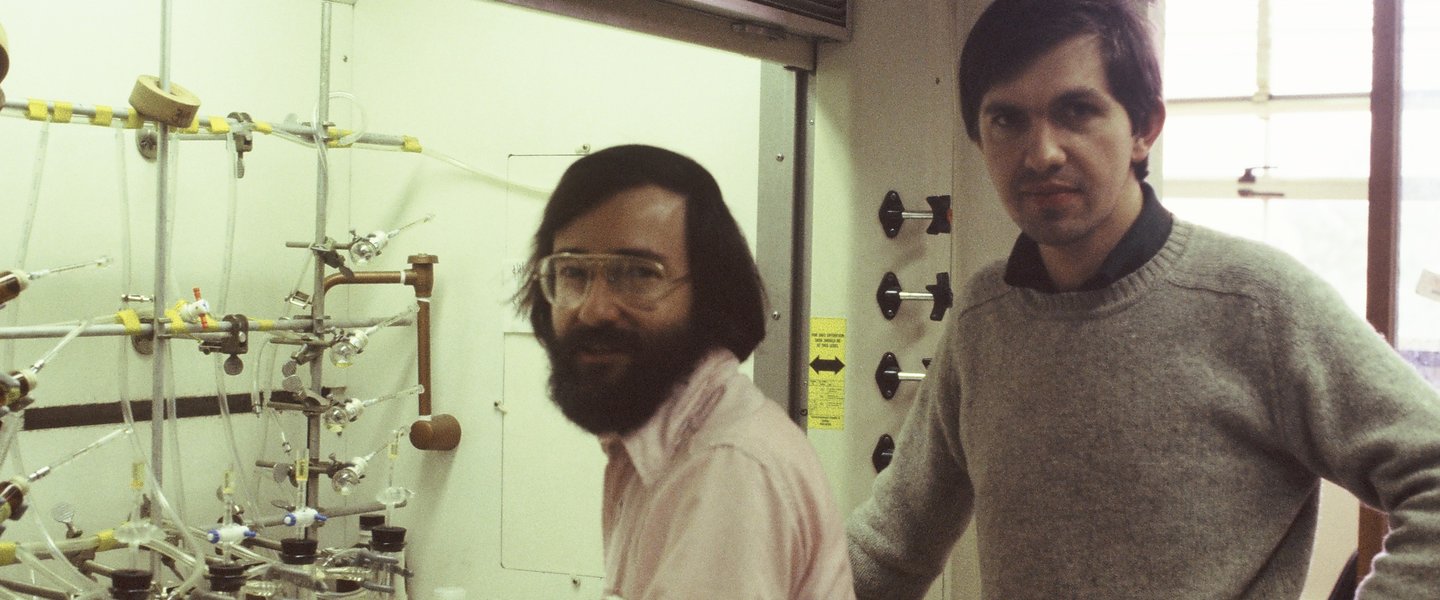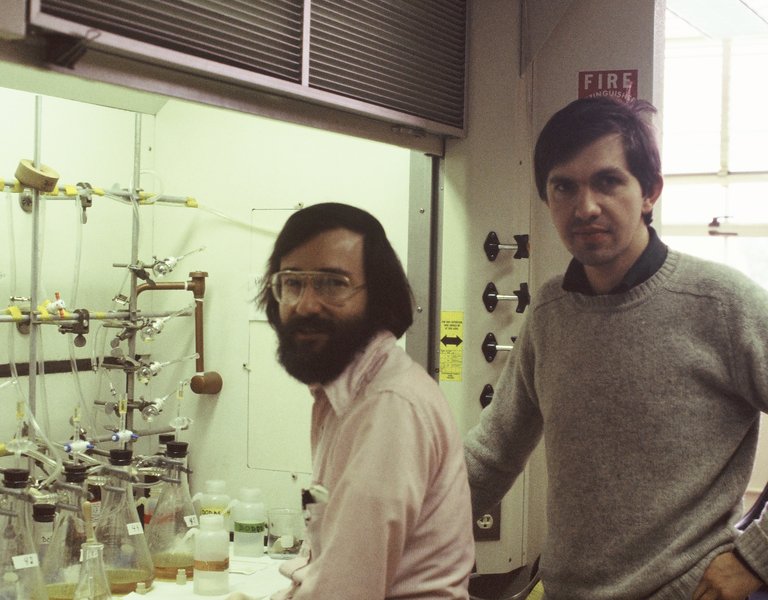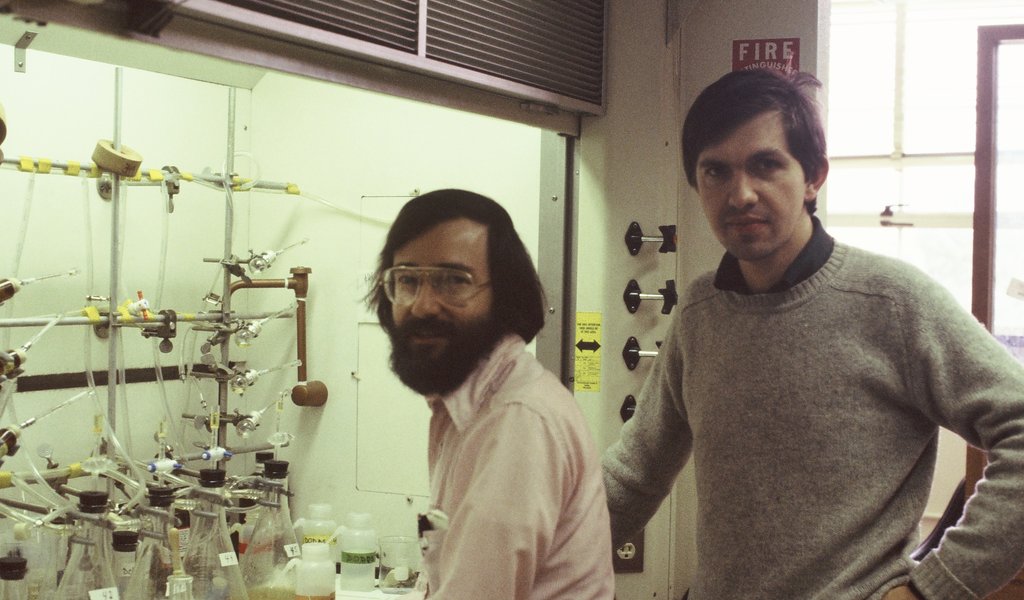The scientists who reveal RNA secrets
Research carried out by Prof. Ryszard Kierzek of the Institute of Bioorganic Chemistry at the Polish Academy of Sciences in Poznan and Prof. Douglas H. Turner of the Chemistry Department of the University of Rochester in the United States has allowed them to predict the structure of ribonucleic acid (RNA). Thanks to the discovery, scientists have not only acquired a better understanding of the processes taking place in human cells, they will also be able to fight pathogenic viruses, such as flu, in a more effective manner. “People collaborating especially across borders can accomplish useful things that might otherwise not be done”, the two scientists awarded with this year’s Poland – U.S. Science Award tell Poland.pl in an interview. The scientists will officially receive the award in Warsaw on 15 November.
Poland.pl: What does the work of a chemist studying RNA structures look like?
Prof. Ryszard Kierzek: From the outside, the work of people studying RNA structures looks like any other job. Jokingly, one could say that I get up each morning and start my day with a cup of coffee and end the day with a tea in the evening. The time between these events is spent working mainly on RNA. Research work is an activity that teaches people to be systematic, focused, persistent, open minded and humble.
The world is much more complex than people think. Consider the following, that in a single cell there are several thousands of biomolecules and its proper functioning is the result of the interactions of many of them. RNA with its complex structure is an important “player” in the cell, in which there are many types of RNAs. Some of them encode specific proteins, but there are an even greater number of non-coding RNAs. For example, there are RNAs that form complexes with specific proteins and they are involved in the biosynthesis of proteins. In the same process, other RNAs allow amino acids to reach a ribosome active site and perform protein synthesis. Moreover, other RNAs can be regulators of many cellular processes through their structural dynamism.
Prof. Douglas Turner: RNA does many different things in an organism. One used to think that all it did was carry information from an organism’s DNA to the ribosome, which then makes protein and that proteins did all of the work of a cell - all the chemical reactions in a cell. But it turns out that in humans less than 5 percent of the DNA actually codes for protein, more that 80 percent of the DNA codes for RNA. So there are lots of different kinds of RNA in a cell and it has lots of different functions including being a catalyst and regulating how much of a given protein will get made but I think there are still many more functions yet to be discovered.
It is my work to understand the forces that determine the folding of an RNA. What actually has to be done to get there is carried out through the chemical synthesis of interesting RNA molecules, which Ryszard does, and then conducting various types of experiments on those molecules. Information from those experiments is put into computer programs written to predict how a given RNA sequence will fold. Then you can very quickly get from the sequence to a predicted folding.
How did you become a chemist and end up studying RNA?
Prof. Douglas Turner: Originally, I just liked mixing chemicals from a chemistry set, then making fuel for rockets, or synthesizing other interesting molecules. So this is how it started when I was in high school. At that time I also liked mathematics, so I really did not know much about RNA until I was a graduate student. When I learned about RNA I became fascinated by it, by its structure and also curious about why it folds. I went to graduate school at Columbia University and did most of my research at Brookhaven National Labs on Long Island in New York. Then I did a postdoc at Berkeley and later took my position at Rochester and I’m still there.
Prof. Ryszard Kierzek: During my chemistry studies at the Adam Mickiewicz University in Poznan I found myself to be most interested in organic chemistry. Therefore I felt elated when I had the opportunity to do my masters thesis on a subject combining chemistry and biology under the supervision of Prof. Maciej Wiewiórowski, and it was 1973. I later did my doctorate under Prof. Wiewiórowski and after that my habilitation thesis. And things just went on from there, taking me to where I am today.
I’ve always been involved with RNA research, it’s just that scientific challenges have changed, my interests have widened, becoming more diverse whilst my approach to research has become more interdisciplinary in nature. My institute, the Institute of Bioorganic Chemistry PAS, is highly recognized around the world for RNA research and I am happy that I am able to contribute to this recognition.
How did the two of you meet?
Prof. Ryszard Kierzek: In late autumn 1984 I started a 6-months research fellowship at the laboratory of Prof. Marvin Caruthers of the Department of Chemistry at the University of Colorado in Boulder. I wanted to learn RNA synthesis by phosphoramidite approach, which Caruthers developed for DNA. For the uninitiated, let me add that the phosphoramidite method is still used today by companies that commercially synthesize DNA for all kinds of research purposes. On the same floor were the laboratories of Professor Thomas Cech, who worked on the catalytic RNA, for which he won a Nobel Prize a few years later. At the same time, Doug Turner, a full-time professor at the University of Rochester, was taking his sabbatical in Tom Cech’s group.
Because I synthesized some RNA oligonucleotides - fragments of the nucleic acid, for Tom Cech, I used to come to the lab on a regular basis and when Doug found out that I can efficiently and quickly synthesize oligonucleotides he was very excited. I actually used to do eight in one day, while Doug’s group in Rochester at that time was able to obtain one within 3-4 weeks.
Prof. Douglas Turner: At the time my group in Rochester was using biochemical reactions to synthesize a short RNA but it would take us about a month. One day, Ryszard showed me that he could use organic chemistry and synthesize four RNAs at a time and that he was able to do that twice a day. He worked very hard. I told him that there are some very important things that can be done with those RNAs so we bonded together and we became close friends and that is still true.
Prof. Ryszard Kierzek: A day later Doug brought Marv Caruthers a long list of oligonucleotides, which he needed in order to implement all of his ideas. I synthesized oligonucleotides from this list and went on to do many more. This 6-months stay produced around 10 publications. That’s a lot. I was the first author in two of them. In terms of publications this was the most productive period of my life. I worked over 12 hours a day and lost weight - around one kilogram each month.
Prof. Douglas Turner: I gave him a list of molecules and the idea was to look at how stable those molecules were as the function of their sequence. We measured the stability of the double helixes formed by the molecules. Once you do that for many different sequences you pull out numbers that allow you to predict for any sequence how stable the double helix would be. And that’s what we did. It finally led us to improve the rules for predicting the structure of any RNA.
What is the main idea behind the breakthrough to develop rules for predicting RNA structure? What is the significance of the discovery – what can it be used for, for example in the field of medicine?
Prof. Ryszard Kierzek: Proposed in the mid-seventies, the nearest neighbour model postulated that any given RNA or DNA duplex can be divided into four nucleotide segments. Assigning to this four nucleotide segments specific values would make possible to predict thermodynamic stability and folding of any RNA. To calculate these parameters one needed to measure the thermodynamic stability of dozens of model RNA oligonucleotides, and at that time the synthesis of the latter was very difficult and time-consuming. Due to the application of the phosphoramidite method to oligonucleotide synthesis I was able to efficiently and quickly obtain model RNA oligonucleotides, which in turn dramatically accelerated studies and allowed to quickly determine thermodynamic parameters of the nearest-neighbour model. It was 1985 and these were the first studies of that kind in the world.
The structure of RNA is much more complex than DNA, and includes many structural motifs other than the helix. Later, our research has been focused on determination of the influence of structural motifs on native RNAs folding. All thermodynamic results obtained were put into a computer program that based on the sequence allow to predict the most stable secondary structure of any RNA. Currently, there are several of such programmes available, and they all use thermodynamic parameters determined by us, often referred to as Turner rules. Because, in addition to DNA and proteins, RNA molecules are the most important biomolecules involved in all biological processes, it is easy to grasp that information about RNA structure is important for the understanding of many biological processes.
It has been shown that RNAs in the cell perform many functions, which are regulated by their structure. In most cases, the RNAs present in the cell appear as complexes of specific proteins. Binding of proteins to specific regions of the RNA can rearrange RNA structure, which often results in a change of biological function. These observations also apply to RNA correlated with many human diseases in which abnormal changes in the structure of RNA is one of the factors causing the disease.
The Poland – U.S. Science Award was established in 2013. It is granted biennially by the Foundation for Polish Science and the American Association for the Advancement of Science, the largest scientific association in the world. In 2016 the Award was granted for the second time. Its first laureates were Professor Mariusz Jaskólski from the Adam Mickiewicz University in Poznan and Doctor Alexander Wlodawer from the National Cancer Institute in the US, crystallographers who discovered the HIV virus protein structure.
“The idea behind the award is to emphasize the significance of Polish-American scientific cooperation and to show that it yields outstanding research achievements. We also hope that our laureates’ successes will inspire other researchers to establish such cooperation as well,” Professor Maciej Żylicz, the president of the Foundation for Polish Science, told Poland.pl.
What are you both working on at the moment?
Prof. Ryszard Kierzek: In recent years the research group that I am pleased to lead has been increasingly focused on RNA biochemistry. We are broadening and using our knowledge of the chemical synthesis of RNA, of the nucleic acid thermodynamics, of native RNA structures and of bioinformatics analysis to inhibit the biological activity of pathogenic RNAs related with human diseases.
This research allow for a more selective and efficient inhibition of pathogenic RNAs. Our experience in the bioorganic synthesis has been very helpful in these studies as it has allowed us to prepare modified RNA oligonucleotides. The modified nucleotide residues placed in oligonucleotides are structurally designed in such a way that they inhibit the RNA activity, for example by making slower and less efficient RNA transcription or depriving them of selected functions. For several years now I have also worked closely with Doug Turner on influenza virus RNAs. By knowing the structure and interactions of viral RNAs we can design modified oligonucleotides, which significantly inhibit the proliferation of the influenza virus.
Prof. Douglas Turner: The other thing that is particularly interesting to me is to try to determine 3D structure of small RNA molecules and then test methods to predict those 3D structures. What we have mostly done so far, and what this award is mostly for, is determining what is called the secondary structure which is essentially the Watson-Crick base pairing of two RNAs. And now I would like to be able to predict three-dimensional RNA structure. That is quite a way off, but I’m working on that now. There are three levels of RNA structure. One is just the sequence and the second one is the Watson-Crick base pairing and the third one is the 3D structure. You can start to design potential therapeutics just from the secondary structure. But 3D structure is better for that than secondary structure. That is really what I would like to see happen.
Chemists say that the most important experiment is the one to be done tomorrow. What kind of experiment would you like to conduct tomorrow?
Prof. Ryszard Kierzek: I agree with the statement that most researchers believe that the experiment planned for tomorrow is the most important one. This shows their realism and understanding of scientific research as well as their passion for research. Looking back at my 40 years of scientific work I notice that my interests are shifting towards larger RNAs.
I am interested in folding of RNAs in the cell, how the RNA structure changes during various stages of biological activity and how the structure of the RNA in a cell is affected by interaction with other biomolecules. This is a very complex and methodologically challenging subject. Slowly I am planning to undertake such an investigation project because such knowledge would be very useful in precisely modulating the biological activity of RNA at the cellular level. I already mentioned the study of influenza virus RNA, and I think this would be a perfect system to carry out such research. Even if I myself cannot finish these studies, I am sure that scientists from our institute will manage to do so.
 What does the Poland – U.S. Science Award mean to you?
What does the Poland – U.S. Science Award mean to you?
Prof. Douglas Turner: People collaborating especially across borders can accomplish useful things that might otherwise not be done. There aren’t that many people in the world who work on each of these kinds of things. The more that you can do across borders, the easier it is to find some match where one person has one expertise and the other person has a different expertise. It means that you can be stronger together. Actually part of the funding for the research that Ryszard and I did, came from an NIH grant called FIRCA – the Fogarty International Research Collaboration Award. I hope the AAAS/FNP Poland-US Science Award furthers international collaboration.
Prof. Ryszard Kierzek: I am very happy to have received this science award and I am very grateful to the Foundation for Polish Science and AAAS for bestowing it to me. The award proves that our joint research has been acknowledged and that its scientific value has been appreciated. Thanks to scientific work, I have dozens of friends in the United States who have helped me and who I have helped and this is a reward that stretches across time. For me, a great reward for our joint research is the large number of citations of our work, as these show that they were needed and have proved to be helpful to others. I am glad that our common contribution to the study of RNA has been recognised by these two organizations and that they have awarded us with the Polish-American Science Award.
Interviewed by Magdalena Majewska

Prof. Ryszard Kierzek studied chemistry at the Adam Mickiewicz University in Poznan. He received his doctorate in 1978 from the Institute of Bioorganic Chemistry at the Polish Academy of Sciences. He did post-doc fellowships at the City of Hope National Medical Centre and the University of Colorado in Boulder (United States). He is currently the head of the Department of Chemistry and Structural Biology of Nucleic Acids at the Institute of Bioorganic Chemistry PAS in Poznan. He has held numerous visiting professorships at universities in the United States. His professional focus is on bio-organic chemistry and the structural biology of RNA. His research uses knowledge of chemistry, biology, thermodynamics, bioinformatics and RNA structure to modulate the biological activity of RNA correlated with human diseases. He has published over 150 papers that have been cited over 6,000 times.

Prof. Douglas H. Turner studied chemistry at Harvard University in the United States. He received his doctorate in the field of physical chemistry from Columbia University in 1972. After finishing his post-doc at the University of California in Berkeley he became a professor at the Chemistry Department of the University of Rochester, to which he is associated with to this day. Prof. Turner is an international expert in the field of RNA biophysics, with a particular focus on RNA thermodynamics – the parameters used to predict the folding of RNA known as the Turner rules. He has published over 230 studies, which have been cited over 15,000 times.
15.11.2016







